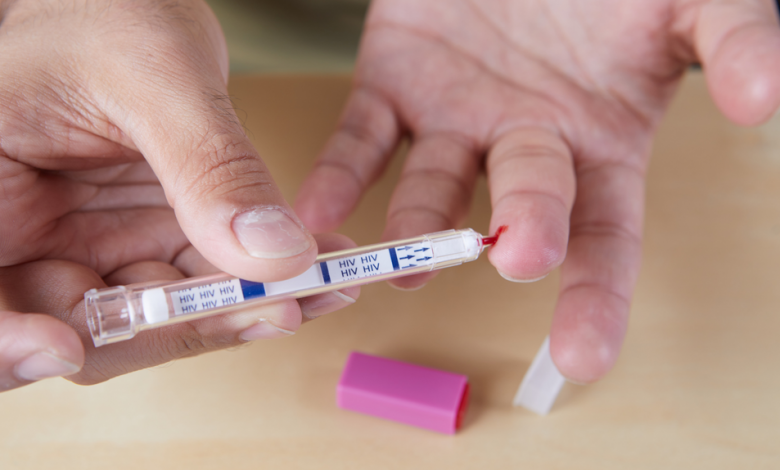Can a blood test detect HIV?

Red and white blood cells, hemoglobin and other blood components are counted during a regular CBC. Blood cancer and anemia can both be detected using this test.
A basic metabolic panel is another common blood test to determine how well your heart, kidneys and liver are working, a basic metabolic panel is another common blood test. This test measures the levels of glucose and calcium in your blood as well as other electrolytes. Your blood fat, including good cholesterol (HDL), bad cholesterol (LDL), and triglycerides, is examined in a lipoprotein panel to identify your risk of heart disease.
A thorough understanding of your blood test findings can help you make appropriate dietary and lifestyle decisions
What information can we get from a simple blood test?
Your doctor can use specific blood tests to determine the function of various organs in your body. A blood test can reveal problems in various organs, including your thyroid, liver, and kidneys.
Your doctor may use blood tests to look for signs of disease and health problems, such as:
- diabetes
- HIV
- anaemia
- cancer
- coronary artery disease in the cardiovascular system
- Even if a person does not already have heart disease, a blood test can reveal if they are at risk of developing it in the future.
- Other blood tests can reveal if your medications are working properly or if your blood is clotting properly.
The virus that causes an infection and eventually the disease known as acquired immune deficiency syndrome (AIDS) is the HIV virus (AIDS). As the immune system weakens in people with AIDS, life-threatening infections and cancers are allowed to thrive. Between 9 and 11 years, depending on the HIV subtype, HIV-infected people normally live.
About 34–40 million people worldwide have HIV (the human immunodeficiency virus), and 30% of those are undiagnosed, leading to unintended transmission. Testing is the only way to know for sure if you have HIV. Everyone between the ages of 13 and 64 should be tested for HIV at least once a year as part of their regular medical care to be on the safe side.
Sharing needles and blood with HIV-positive individuals, as well as vaginal and rectal secretions, is the primary method of transmission of HIV. Sharing meals, toilet seats, or other comparable behaviours such as shaking hands does not count as physical touch.
Stages of HIV infection
Three stages of HIV infection are involved in the disease’s progression.
Within two to four weeks after infection, a person is considered to be in acute HIV infection.
During the chronic stage of HIV infection, the virus continues to multiply in the body, albeit at a much slower rate than during the acute stage.
When the immune system is completely depleted, an infection is said to have reached its ultimate stage, known as acquired immune deficiency syndrome (AIDS).
Without therapy, HIV infection progresses in stages and worsens over time. AIDS is the result when the immune system is destroyed. Consequently, it is imperative to get an early diagnosis of the infection.
What is the procedure for HIV testing?
If you’re HIV-positive, a blood test will tell you. You must get tested for HIV in order to keep tod others safe. It is capable of detecting HIV infection, but it does not provide information on the length of time that a person has been infected with the disease.
Blood tests best do detection of HIV. Blood testing can detect antibodies produced by the body in response to HIV infection. Because it takes time for your body to produce these antibodies. These tests cannot detect HIV in blood shortly after infection (usually 2 to 8 weeks, sometimes even six months).
HIV Detection
The most common way to detect HIV infection is through blood tests. Antibodies to the virus can be detected with these tests since the body develops them to fight it.
Exposure to the virus can take anywhere from six weeks to a year. As a result, individuals should be tested as soon as possible. Additional tests may be required depending on the initial exposure length.
It is vital to perform early testing. You and your doctor will work together to come up with a treatment plan if you are found to be infected with HIV and want to stay healthy. This could help you avoid potentially dangerous actions that could spread the virus to other people.
Most medical practitioners provide HIV testing and counselling as part of their standard practice. Also included is an option for free and anonymous testing. Inquire about your symptoms, medical history, and risk factors, and then have a physical examination.
Tests for AIDS and HIV
For HIV and AIDS, the most common tests are listed as follows:
The ELISA Test To detect HIV infection, an enzyme-linked immunosorbent test, or ELISA, is used. A Western blot test is often used to confirm the diagnosis after an ELISA test yields a positive result. To rule out HIV, you should have another ELISA test done one to three months after a negative ELISA test result. Because antibodies are not generated immediately after infection, even though the ELISA is exceptionally sensitive to chronic HIV infection, you may test negative for a few weeks to a few months. Even if you get a negative result within this time frame, your viral load may be high, which increases your risk of spreading the illness.
To Do Your Tests at Home Only the Home Access Express Test, accessible at pharmacies, has been approved by the US Food and Drug Administration as a home test.
Read Also: Are Fenugreek Seed Very Good For Diabetes?
Examinations of the Saliva To remove saliva from the inside of your cheeks, a cotton pad is used. It is submitted for testing in a vial. To confirm positive results, a blood test should be carried out.
Perform a Viral Load Testing Procedure Using this test. You can find out if you have HIV in your blood. In most cases, it’s used to keep tabs on the progress of HIV treatment or to catch an infection in its early stages. The RT-PCR branched DNA (bDNA), and amplification based on nucleic acid sequences are three methods for determining the viral load of HIV in the blood (NASBA). These tests have a lot in common in terms of their basic concepts. DNA sequences that attach to HIV sequences allow the virus to be recognised. It’s important to keep in mind that results may vary from one exam to the next.
The Western Blot ELISA test results are confirmed by this blood test, which has a high level of sensitivity.



